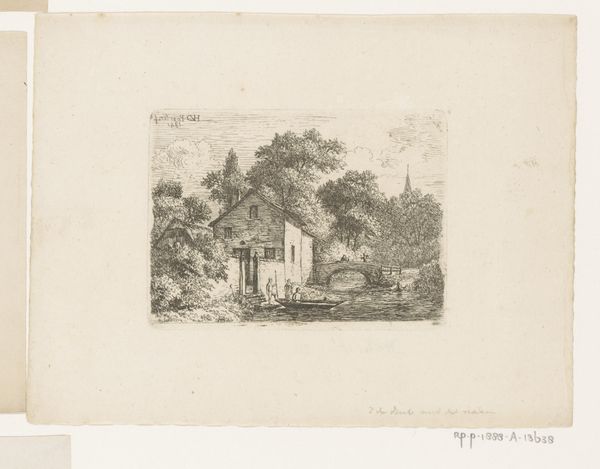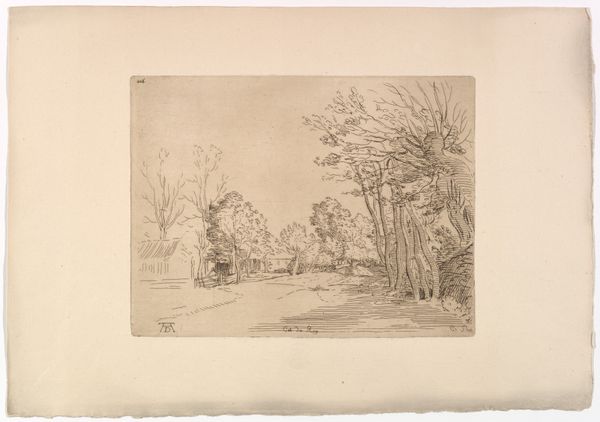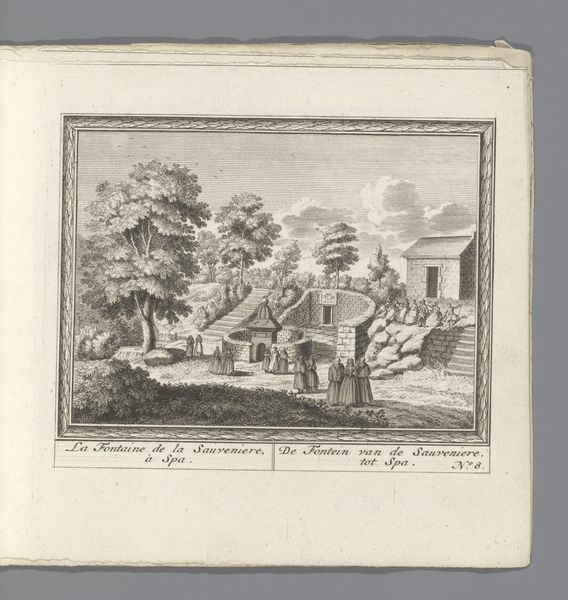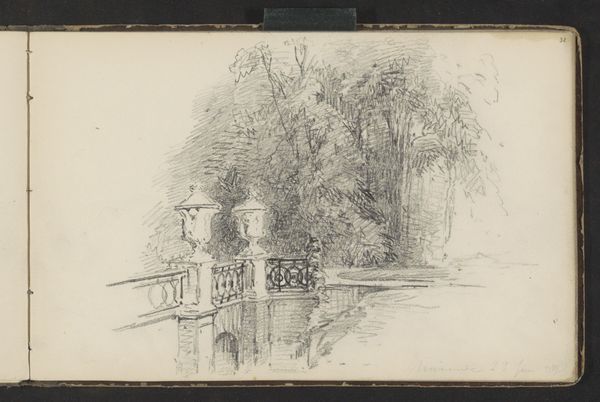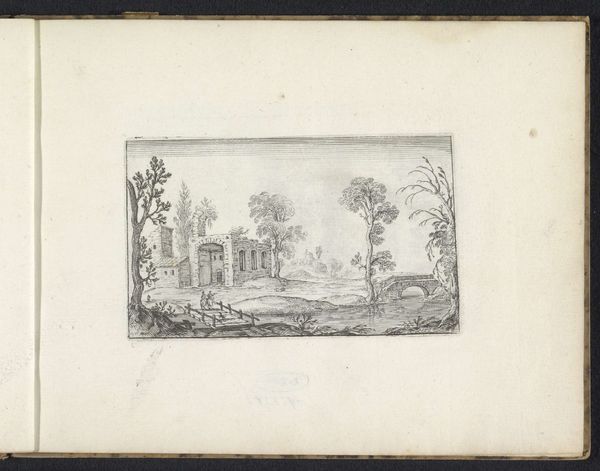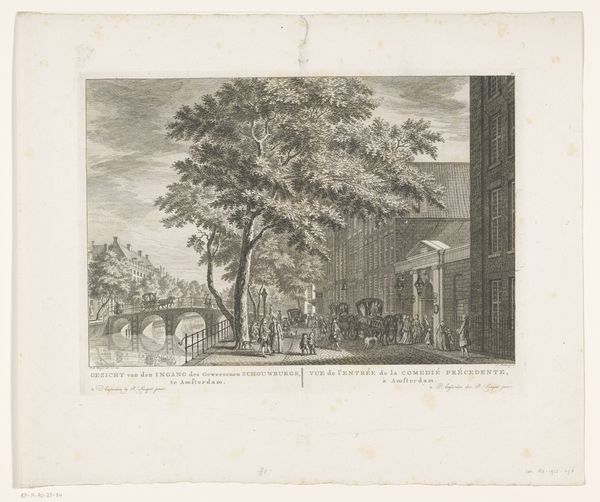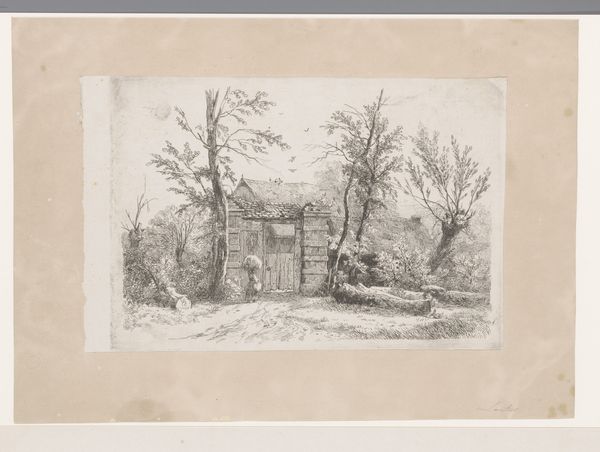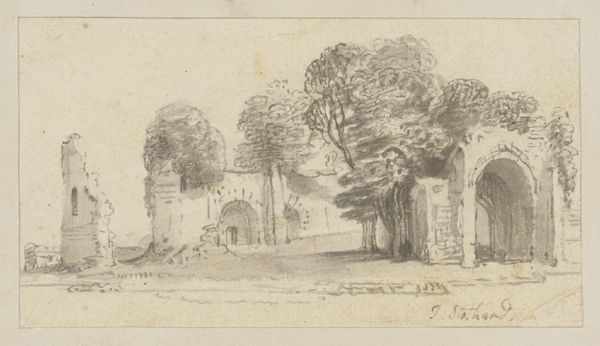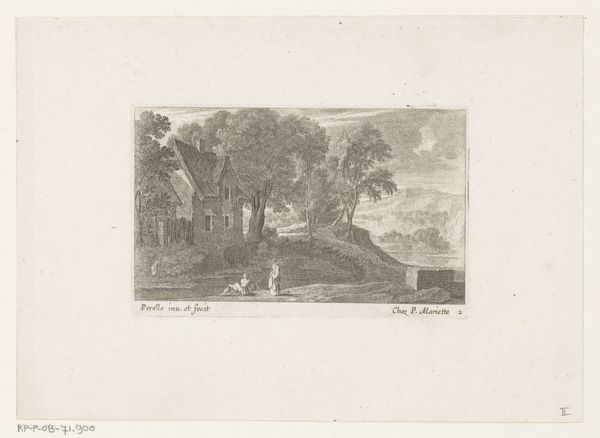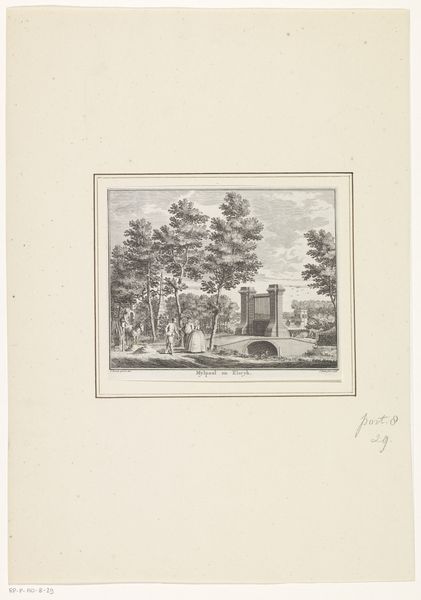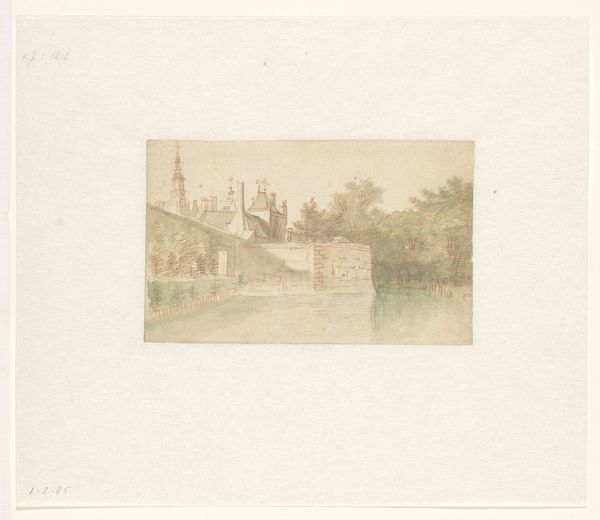
drawing, etching, pencil
#
drawing
#
etching
#
pencil sketch
#
landscape
#
etching
#
pencil
Dimensions: height 157 mm, width 219 mm
Copyright: Rijks Museum: Open Domain
Editor: This etching, "Tol aan de Leidse vaart te Haarlem," attributed to Jan Striening between 1837 and 1903, presents a quiet landscape with a building and gatehouse. It's quite understated, and I am curious about how we might approach it from an art historical perspective. What grabs your attention in this particular piece? Curator: The artist’s choice of etching and pencil, common reproductive techniques in the 19th century, positions this work within a larger discussion about accessibility and artistic labor. These mediums allowed for wider circulation than unique paintings. Notice how the soft pencil lines mimic the precision of etching, blurring the line between original work and reproduction. Consider the socio-economic implications: Who had access to such images, and how did that influence the perception of landscape and ownership? Editor: That's a fascinating point about accessibility. So, the artist’s choice isn't just aesthetic but speaks to broader societal structures? Curator: Exactly. The etching process itself, involving acid, metal plates, and printing presses, represents an industrialization of art. How does this contrast with the idyllic, pastoral scene depicted? What tension arises between the handcrafted nature of art and its mass production potential? Look at the inscription; how does that situate the art in an identifiable local context? Editor: I see. The landscape is seemingly peaceful, but the method of creating it points towards industrial changes happening at the time. Perhaps the contrast highlights the transformation of the Dutch landscape. Curator: Precisely! By considering the material processes and context of production, we move beyond simply appreciating the aesthetic value and gain a deeper understanding of the artwork's relationship to its time and society. Editor: That’s a really helpful way to consider this etching, shifting focus to its creation process as a lens into the cultural landscape.
Comments
No comments
Be the first to comment and join the conversation on the ultimate creative platform.
